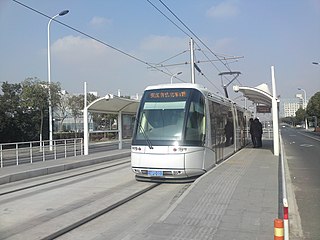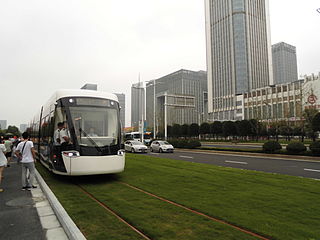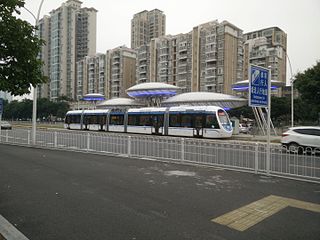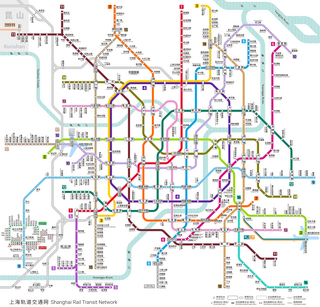
Nanjing is the capital of Jiangsu province of the People's Republic of China. It is a sub-provincial city, and a megacity. The city has 11 districts, an administrative area of 6,600 km2 (2,500 sq mi), and a population of 9,423,400 as of 2021. Situated in the Yangtze River Delta region, Nanjing has a prominent place in Chinese history and culture, having served as the capital of various Chinese dynasties, kingdoms and republican governments dating from the 3rd century to 1949, and has thus long been a major center of culture, education, research, politics, economy, transport networks and tourism, being the home to one of the world's largest inland ports. The city is also one of the fifteen sub-provincial cities in the People's Republic of China's administrative structure, enjoying jurisdictional and economic autonomy only slightly less than that of a province. Nanjing has been ranked seventh in the evaluation of "Cities with Strongest Comprehensive Strength" issued by the National Statistics Bureau, and second in the evaluation of cities with most sustainable development potential in the Yangtze River Delta. It has also been awarded the title of 2008 Habitat Scroll of Honor of China, Special UN Habitat Scroll of Honor Award and National Civilized City. Nanjing is also considered a Beta city classification, together with Chongqing, Hangzhou and Tianjin by the Globalization and World Cities Research Network, and ranked as one of the world's top 100 cities in the Global Financial Centres Index.

Line 2 is an east–west line in the Shanghai Metro network. With a length of nearly 64 km (40 mi), it is the second longest line in the metro system after line 11. Line 2 runs from East Xujing in the west to Pudong International Airport in the east, passing Hongqiao Airport, the Huangpu river, and the Lujiazui Financial District in Pudong. With a daily ridership of over 1.9 million, it is the busiest line on the Shanghai Metro. The eastern portion of the line, from Guanglan Road to Pudong International Airport, was operated almost independently from the main segment until April 19, 2019, when through service began. The line is colored light green on system maps.

The Nanjing Metro is a rapid transit system serving the urban and suburban districts of Nanjing, the capital city of Jiangsu Province in the People's Republic of China.

Zhangjiang Tram was a tram network operating in Shanghai that utilised a Translohr system. Shanghai originally had a steel wheeled electric tramway network in its urban center. Routes expanded gradually and reached largest extent in 1925 with 328 tramcars; this tram system shut down in 1975. Tram service returned to Shanghai with the opening of a rubber tired Translohr line in the suburban Zhangjiang Hi-Tech Park in 2010. It is the second rubber-tired tram system in both China and Asia, the first being TEDA tram in Tianjin.

Trams have been operating in Dalian continuously since 1909, making them one of the oldest tram systems still in use in mainland China. There were once eleven routes in operation in Dalian in Northeast China. Only two routes remain in use today. There was a route 203 which currently merged into route 201. Notably, most of the staff on Dalian's tram system are female, such as the driver, conductor, points man—even the depot manager. The tram system was the only rail network in the city, until Dalian Metro opened in 2003.

Several cities in China had tram systems during the 20th century; however, by the end of the century, only Dalian and Changchun remained extant. However the 21st century has seen a resurgence in tram transport systems as China attempts to combat with urban traffic congestion and pollution.

Shenzhen Tram is a light rail system consisting of two tram routes in Longhua District, Shenzhen, Guangdong, China. Construction commenced on 27 December 2013 and public testing started on 30 June 2017, with the system fully opening on 28 October 2017. The tram system integrates the north side of Longhua into the city's rail network and is expected to significantly ease commuting difficulties.

The Hexi tram is one of two new tramlines that serve the city of Nanjing, China. These lines are part of the Nanjing tram network, which is an above-ground trolley system in Nanjing. The tram began its first trial run on August 13. The tram was built as part of infrastructure works for the 2014 Summer Youth Olympics.

Guangzhou Tram is the tram system in Guangzhou, Guangdong province, China. It is operated by Guangzhou Tram Corporation, a wholly owned subsidiary of Guangzhou Metro Corporation.

The Zhuhai tram network was a light rail system serving the city of Zhuhai, Guangdong, China. The first section of Line 1 started trial operation on November 7, 2014 with the full line scheduled initially to open by August 2015 and finally opened on 13 June 2017 and runs from Haitian Gardens to Shangchong. A three-line network was planned.

Taifenglu station, is an interchange station of Line 3 and Line S8 of the Nanjing Metro. It began operations on Line S8, or the Ningtian (Nanjing–Tianchang) intercity railway, on 1 August 2014 along with the rest of Phase I of that line from Taishanxincun to Jinniuhu; the interchange with Line 3 opened on 1 April 2015.

Shenyang Modern Tram is a tram network operating in Hunnan New District in southern Shenyang, Liaoning province, People's Republic of China. The tram system mostly uses a traditional overhead line system, but some sections are wireless with the tram running partly on super-capacitor batteries charging at every stop, the first such system in Asia. It is the longest tram system in China.

Suzhou SND Tram is a tram system in Suzhou New District, Suzhou, Jiangsu, China. The tram uses an overhead catenery system. Suzhou Tram started construction on September 11, 2012 and was opened on October 26, 2014. There is currently two lines in operation in the Suzhou New District. The Suzhou High-Tech Rail Tram Limited was established in April 2011, and the tram line was approved by the Suzhou City government June the same year.
Trams in Wuhan may refer to any one of the tram systems currently operational in the city of Wuhan, Hubei, China. The first tram started revenue service in Wuhan is the Auto-city T1 Line, which began on July 28, 2017. Subsequently, Optics Valley tram started revenue service from April 1, 2018.

Songjiang Tram is a light rail tramway in Shanghai, China. The system consists of two lines totaling 31 km (19 mi) with 42 stations. Unlike the Zhangjiang Tram, Songjiang trams use centenary power supply and steel-wheeled rail systems. Most of them use independent rights of way. The intersection signal lights were adjusted through the system to make them pass first, and the running speed reaches 25-30km/h. Trains run from 6:00 till 22:00. With further extension of the network public transport modal split in Songjiang is expected from the current 23% to 40%.
Tianshui Tram is a light rail system consisting of one route in Qinzhou District and Maiji District, Tianshui, Gansu, China.

The Honghe Modern Tramway is a tram operating in Mengzi City, Honghe Prefecture, Yunnan Province, China. The rolling stock was provided by CRRC Nanjing Puzhen.

Chengdu Tram Line 2 is a tram line in Chengdu, China. The line has a total length of 39.3 kilometres (24.4 mi) and 35 stations. It has a 'Y' layout and runs from the Chengdu West railway station to Pixian West railway station and Hongguang. The line was officially started in December 2015, and the 13.7 km (8.5 mi) demonstration section of the line was opened on 26 December 2018, and the remaining sections were opened on 27 December 2019.

Shanghai Rail Transit includes all rail transit lines operating in Shanghai, mainly composed of High-volume railway system, Low-to-medium-volume railway system and Maglev system. The system was established on May 28, 1993, when Shanghai Metro Line 1 opened.



















